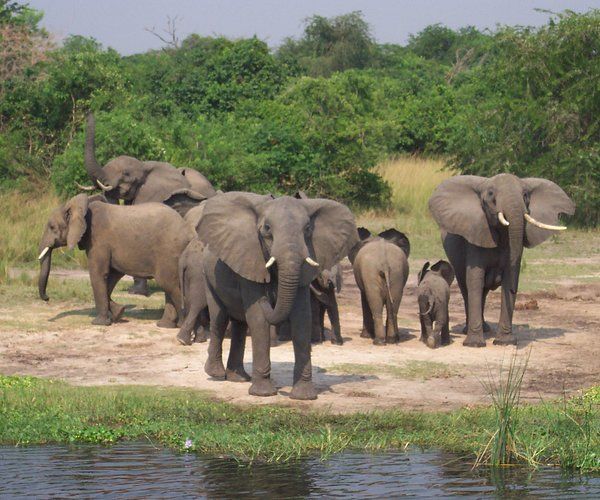What is domestic tourism in Uganda?
Domestic tourism in Uganda refers to the travel and exploration activities undertaken by Ugandan citizens within their own country. Instead of traveling abroad, locals visit attractions, cultural sites, national parks, and urban destinations across Uganda. Domestic tourism has grown steadily in recent years due to increased awareness of Uganda’s diverse attractions and government campaigns promoting “Visit Uganda.” It not only encourages pride in national heritage but also sustains the tourism industry during times when international arrivals may fluctuate.
Why is domestic tourism important for Uganda’s economy?
Domestic tourism plays a vital role in strengthening Uganda’s economy. When Ugandans travel locally, they spend money on transport, accommodation, entry fees, and local products. This circulation of money within the country supports small businesses, creates jobs, and improves livelihoods in rural communities. Unlike international tourism, domestic tourism is less vulnerable to global crises such as pandemics or political instability abroad. It provides a reliable revenue stream that helps stabilize Uganda’s tourism sector.
What are the top domestic tourism destinations in Uganda?
Uganda offers numerous destinations that attract local tourists. Popular sites include national parks such as Murchison Falls National Park, Queen Elizabeth National Park, and Bwindi Impenetrable Forest. Ugandans also enjoy visiting cultural landmarks such as the Kasubi Tombs, Namugongo Martyrs Shrine, and Kabaka’s Palace. Adventure lovers often head to Jinja, famous as the “Adventure Capital of East Africa,” for activities like white-water rafting and bungee jumping. Additionally, Lake Victoria’s beaches, Sipi Falls in eastern Uganda, and the Rwenzori Mountains remain highly favored domestic spots.
How affordable is domestic tourism for Ugandans?
The affordability of domestic tourism depends on factors such as transport, accommodation, and park entry fees. To encourage local participation, the Uganda Wildlife Authority (UWA) provides discounted entry fees for Ugandans compared to international tourists. Many lodges and hotels also offer resident rates and special packages targeting local travelers. While high-end luxury options exist, budget-friendly guesthouses, community lodges, and camping sites make tourism accessible for more Ugandans. Government campaigns like “Tulambule Uganda” continue to promote affordable travel options for citizens.
What cultural tourism opportunities exist within Uganda?
Uganda’s cultural diversity offers rich opportunities for domestic tourism. With over 50 ethnic groups, each with unique traditions, music, dance, and crafts, Ugandans have the chance to explore their own cultural heritage. Popular cultural destinations include the Ndere Cultural Centre in Kampala, the Igongo Cultural Centre in Mbarara, and community-based tourism experiences in places like Karamoja. Festivals such as the Nyege Nyege Festival and cultural galas across the country also draw local crowds interested in celebrating Ugandan identity.
How does domestic tourism support wildlife conservation?
Domestic tourism contributes directly to wildlife conservation in Uganda. Entrance fees collected at national parks and reserves fund conservation projects and park management. When Ugandans visit protected areas, they develop a deeper appreciation for wildlife and natural resources, which encourages them to support conservation initiatives. Domestic tourism also reduces overreliance on international visitors for funding, ensuring continuous financial support for conservation regardless of global travel trends.
What role do national parks play in Uganda’s domestic tourism?
National parks serve as major attractions for domestic tourists. Ugandans frequently visit Murchison Falls National Park to witness the dramatic waterfall or Queen Elizabeth National Park to enjoy game drives and boat cruises. Bwindi Impenetrable Forest, known for mountain gorilla trekking, is a source of pride for many Ugandans. The parks not only provide opportunities for leisure but also serve educational purposes, as schools organize field trips to teach students about biodiversity and environmental protection.
What activities are popular among Ugandan domestic tourists?
Domestic tourists in Uganda engage in a variety of activities. Wildlife safaris remain the most popular, with game drives, birdwatching, and boat cruises attracting large numbers. Adventure activities such as white-water rafting, zip-lining, and mountain climbing appeal to younger audiences. Cultural tours, community visits, and heritage site explorations also remain high on the list. Many Ugandans enjoy short weekend getaways to beaches, resorts, and waterfalls, making leisure travel a growing trend among domestic tourists.
How does domestic tourism promote community development?
Domestic tourism fosters community development by generating income for local residents. Communities living near tourist attractions benefit when Ugandans purchase crafts, hire local guides, or stay in community-run lodges. This economic empowerment reduces poverty and provides alternative livelihoods that discourage environmentally harmful practices like poaching. Additionally, cultural exchange between domestic tourists and rural communities strengthens social cohesion and promotes mutual understanding of Uganda’s diverse heritage.
What challenges affect the growth of domestic tourism in Uganda?
Despite its potential, domestic tourism in Uganda faces several challenges. Limited disposable income among many Ugandans makes frequent travel difficult. Poor infrastructure, such as unpaved roads leading to remote attractions, also restricts accessibility. Awareness remains another issue, as some Ugandans lack information about affordable travel opportunities within their own country. Furthermore, high accommodation costs in certain areas and inadequate marketing limit participation by the average citizen. Addressing these challenges is crucial for unlocking the full potential of domestic tourism.
How does the Ugandan government support domestic tourism?
The Ugandan government actively promotes domestic tourism through campaigns like “Tulambule Uganda.” The Uganda Tourism Board (UTB) collaborates with stakeholders to offer promotional packages, discounted rates, and awareness programs. The government also invests in infrastructure development, including road construction and improved facilities at major attractions. By working with tour operators, schools, and cultural institutions, the government ensures that more Ugandans appreciate their natural and cultural heritage.
What events and festivals attract local tourists in Uganda?
Uganda hosts a wide variety of events and festivals that attract domestic tourists. The Nyege Nyege Festival in Jinja has become a cultural highlight, drawing thousands of Ugandans. The Rolex Festival in Kampala celebrates Uganda’s popular street food, while music festivals and cultural galas showcase the country’s talent. Religious events such as the Martyrs’ Day pilgrimage in Namugongo also attract large numbers of local travelers. These events boost domestic tourism by encouraging Ugandans to travel and participate in national celebrations.
How does domestic tourism compare to international tourism in Uganda?
Domestic tourism differs from international tourism in terms of spending power, preferences, and accessibility. International tourists often spend more on luxury lodges and exclusive experiences, while domestic tourists prioritize affordability. However, domestic tourism ensures consistent visitor numbers during off-peak international seasons, providing stability to the industry. Unlike international visitors who may travel for wildlife and adventure, domestic tourists often combine leisure with cultural and family-oriented activities. Both segments complement each other and together sustain Uganda’s tourism industry.
What transport options support domestic tourism in Uganda?
Uganda’s transport network offers various options for domestic tourists. Road transport is the most common, with buses, minibuses, and private cars connecting major towns to tourist destinations. Ride-hailing services in urban areas also facilitate short trips. For longer distances, domestic flights operate between cities like Entebbe, Arua, Kidepo, and Kasese. While some roads remain underdeveloped, ongoing infrastructure projects continue to improve accessibility, making travel more convenient for local tourists.
How does domestic tourism promote heritage preservation in Uganda?
Domestic tourism plays a key role in preserving Uganda’s cultural and historical heritage. When Ugandans visit museums, cultural centers, and heritage sites, they contribute to the maintenance of these places. Increased domestic visits also emphasize the importance of safeguarding traditions, languages, and historical monuments. Cultural pride strengthens as Ugandans explore their heritage, ensuring that future generations inherit well-preserved cultural landmarks and practices.
What is the future of domestic tourism in Uganda?
The future of domestic tourism in Uganda looks promising. Rising middle-class incomes, improved infrastructure, and digital platforms promoting travel are driving growth. Social media continues to inspire Ugandans to explore local destinations, while schools and universities encourage educational tourism. With sustained government support and increased private sector involvement, domestic tourism will likely expand further, contributing significantly to Uganda’s economy and strengthening cultural pride.




